
Langkawi: The Jewel of Kedah
Discover Langkawi: Malaysia's tropical paradise with stunning beaches, lush forests, exciting attractions, and rich cultural heritage. A perfect blend of relaxation and adventure.
Langkawi, an archipelago of 99 islands in the Andaman Sea, is a paradise in Malaysia. Known for its pristine beaches, clear waters, and lush landscapes, it offers a perfect blend of relaxation and adventure. The main island, Pulau Langkawi, is a treasure trove of natural beauty and cultural heritage. One of the first things to do in Langkawi is to visit its stunning beaches. Pantai Cenang is the most popular beach, bustling with life and activities. For a quieter experience, head to Tanjung Rhu, where you can enjoy serene views and crystal-clear waters. The island's underwater world is equally mesmerizing, making it a great spot for snorkeling and diving. Langkawi is also rich in attractions. The Langkawi Sky Bridge offers breathtaking views of the island and the sea. Take a ride on the Langkawi Cable Car to reach the top of Gunung Mat Cincang, the second highest peak in Langkawi. For nature lovers, the mangrove forests of Kilim Karst Geoforest Park are a must-visit. The island is duty-free, which means shopping is a delight. Kuah Town is the main shopping hub, offering everything from chocolates to kitchenware at unbeatable prices. Don't miss the chance to explore Langkawi's night markets for local crafts and delicious street food. Langkawi's cultural side is equally captivating. The island has a rich history, evident in landmarks like Mahsuri's Tomb and the Al-Hana Mosque. Traditional Malay culture is celebrated through various events and festivals throughout the year, offering a glimpse into the local way of life.
Local tips in Langkawi
- Currency: The local currency is Malaysian Ringgit (MYR). Carry some cash for small purchases.
- Transport: Renting a car or scooter is the best way to explore the island.
- Weather: Langkawi is hot and humid year-round. Pack light clothing and stay hydrated.
- Duty-Free Shopping: Take advantage of Langkawi's duty-free status for great deals on chocolates, alcohol, and tobacco.
- Local Cuisine: Try local dishes like Nasi Lemak, Laksa, and Satay at food stalls and night markets.
Langkawi: The Jewel of Kedah
Langkawi, an archipelago of 99 islands in the Andaman Sea, is a paradise in Malaysia. Known for its pristine beaches, clear waters, and lush landscapes, it offers a perfect blend of relaxation and adventure. The main island, Pulau Langkawi, is a treasure trove of natural beauty and cultural heritage. One of the first things to do in Langkawi is to visit its stunning beaches. Pantai Cenang is the most popular beach, bustling with life and activities. For a quieter experience, head to Tanjung Rhu, where you can enjoy serene views and crystal-clear waters. The island's underwater world is equally mesmerizing, making it a great spot for snorkeling and diving. Langkawi is also rich in attractions. The Langkawi Sky Bridge offers breathtaking views of the island and the sea. Take a ride on the Langkawi Cable Car to reach the top of Gunung Mat Cincang, the second highest peak in Langkawi. For nature lovers, the mangrove forests of Kilim Karst Geoforest Park are a must-visit. The island is duty-free, which means shopping is a delight. Kuah Town is the main shopping hub, offering everything from chocolates to kitchenware at unbeatable prices. Don't miss the chance to explore Langkawi's night markets for local crafts and delicious street food. Langkawi's cultural side is equally captivating. The island has a rich history, evident in landmarks like Mahsuri's Tomb and the Al-Hana Mosque. Traditional Malay culture is celebrated through various events and festivals throughout the year, offering a glimpse into the local way of life.
When is the best time to go to Langkawi?
Iconic landmarks you can’t miss
Langkawi Skybridge Cable Car
Explore the breathtaking Langkawi Skybridge Cable Car, offering stunning views and an unforgettable adventure in Malaysia's natural beauty.

Langkawi Sky Bridge
Discover Langkawi Sky Bridge, an architectural wonder offering breathtaking views and an exhilarating experience high above Malaysia's stunning landscapes.

Dataran Lang
Explore the iconic Dataran Lang in Langkawi, a scenic spot featuring a majestic eagle statue and stunning waterfront views perfect for relaxation.

Underwater World Langkawi
Explore the wonders of marine life at Underwater World Langkawi, a top-notch aquarium featuring diverse species and interactive exhibits along Chenang Beach.
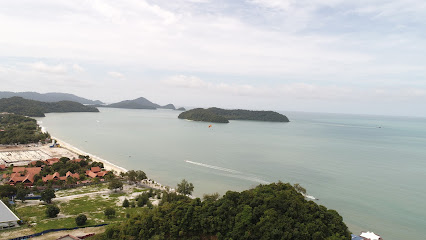
Kuah Jetty, Langkawi
Experience the vibrant atmosphere and stunning views at Kuah Jetty, your gateway to the enchanting islands of Langkawi, Malaysia.

Kilim Geoforest Park
Discover the breathtaking ecological beauty and rich biodiversity of Kilim Geoforest Park, a UNESCO Global Geopark in Langkawi, Malaysia.

Langkawi Wildlife Park
Experience the vibrant wildlife at Langkawi Wildlife Park, a tropical haven featuring exotic animals, interactive exhibits, and educational encounters for all ages.

Kota Mahsuri
Explore the captivating legend of Mahsuri at Kota Mahsuri, Langkawi's historical museum showcasing rich folklore and cultural heritage.

Temurun Waterfall
Experience the breathtaking beauty of Temurun Waterfall in Langkawi, Malaysia, a stunning natural preserve perfect for nature lovers and adventure seekers.

Beras Terbakar, Kampung Raja, Langkawi, Kedah.
Discover Beras Terbakar, a historical landmark in Langkawi that showcases the island's rich cultural heritage amidst stunning natural beauty.

Teow Soon Huat Duty Free Sdn. Bhd.
Discover exceptional duty-free shopping at Teow Soon Huat Duty Free Sdn. Bhd. in Langkawi, where quality meets affordability for all your favorite products.

Telaga Tujuh Waterfall
Experience the natural beauty of Telaga Tujuh Waterfall, a breathtaking seven-tiered waterfall in Langkawi, perfect for adventure and relaxation.

Legenda Park
Discover the tranquil charm of Legenda Park in Langkawi, where lush gardens and cultural sculptures create a serene escape in nature.

Gunung Raya
Experience the breathtaking views and rich biodiversity of Gunung Raya, the highest peak in Langkawi, Malaysia.

Taman Agroteknologi MARDI Langkawi
Explore Taman Agroteknologi MARDI Langkawi – a unique fusion of nature and agricultural technology nestled in the heart of Langkawi.

Unmissable attractions to see
Langkawi Skybridge Cable Car
Discover unparalleled views and adventure at the Langkawi Skybridge Cable Car, an iconic attraction in Malaysia's tropical paradise.
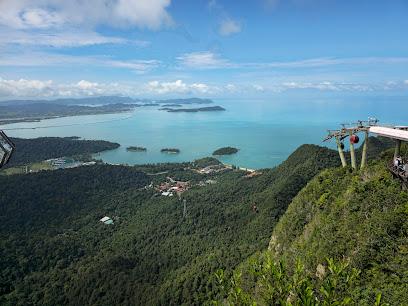
Langkawi Sky Bridge
Experience breathtaking views and thrilling walks at Langkawi Sky Bridge, a stunning architectural marvel nestled in the tropical paradise of Malaysia.
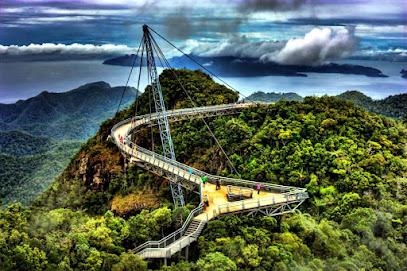
Underwater World Langkawi
Experience the wonders of marine life at Underwater World Langkawi, an engaging aquarium showcasing the beauty of the ocean's creatures.
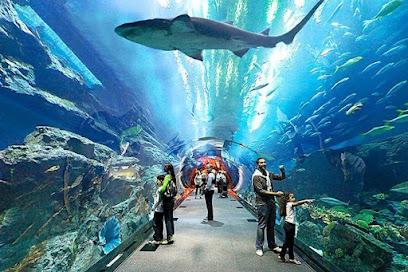
Kilim Geoforest Park
Discover the breathtaking beauty of Kilim Geoforest Park, a UNESCO site in Langkawi filled with unique wildlife and stunning landscapes.

Langkawi Wildlife Park
Experience the beauty of diverse wildlife and immersive animal encounters at Langkawi Wildlife Park, a must-visit destination for nature lovers.

Tanjung Rhu Beach
Discover the serene beauty of Tanjung Rhu Beach in Kedah, Malaysia, where pristine sands meet the azure waters of the Andaman Sea.

Crocodile Adventureland Langkawi
Explore the wonders of Crocodile Adventureland Langkawi, an exciting wildlife park showcasing fascinating crocodile species and thrilling live shows.

Beras Terbakar, Kampung Raja, Langkawi, Kedah.
Discover Beras Terbakar, a historical landmark in Langkawi, where local folklore and scenic beauty intertwine for an unforgettable experience.

Telaga Tujuh Waterfall
Experience the enchanting beauty of Telaga Tujuh Waterfall in Langkawi, a serene escape into nature with stunning pools and lush landscapes.

3D Art in Paradise Langkawi
Experience the magic of art at 3D Art in Paradise Langkawi, where creativity and fun merge into an unforgettable adventure.

Pantai Cenang
Experience the enchanting beauty of Pantai Cenang, a tropical paradise perfect for relaxation, adventure, and vibrant nightlife in Kedah, Malaysia.
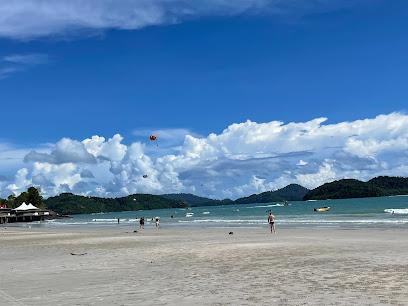
Legenda Park
Experience the enchanting beauty and rich cultural heritage of Legenda Park, a serene oasis in Langkawi that captivates every visitor.
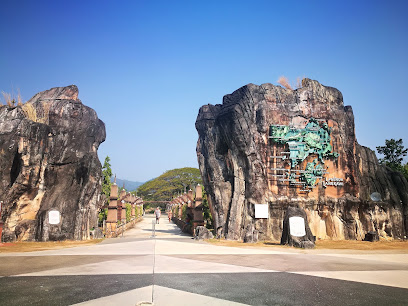
Dream Forest Langkawi
Experience the magic of nature and adventure at Dream Forest Langkawi, a captivating theme park perfect for family fun and exploration.

MAHA Tower
Discover breathtaking views and natural beauty at MAHA Tower, a must-visit attraction in Langkawi, Malaysia for every traveler seeking adventure.

Taman Agroteknologi MARDI Langkawi
Explore Taman Agroteknologi MARDI Langkawi - A unique blend of technology and nature showcasing Malaysia's agricultural innovation and beauty.

Essential places to dine
Restoran Kak Yan Nasi Campur
Discover authentic Malaysian flavors at Restoran Kak Yan Nasi Campur in Langkawi – where every dish tells a story.

Wonderland Food Store
Discover the best seafood delights at Wonderland Food Store in Langkawi - where fresh flavors meet unforgettable dining experiences.

Yellow Beach Cafe
Discover Yellow Beach Cafe: A perfect blend of Western flavors and vibrant nightlife in beautiful Pantai Cenang, Langkawi.

Telaga Seafood Restaurant
Discover the exquisite flavors of fresh seafood at Telaga Seafood Restaurant in Langkawi – where every meal is a feast for your senses.

Hidden Langkawi
Experience the vibrant flavors of Western cuisine at Hidden Langkawi – where culinary delights meet island charm in Kedah.

Fish Farm Restaurant & Resort
Discover exquisite seafood dining amidst serene landscapes at Fish Farm Restaurant & Resort in Langkawi.

Hadramawt Restaurant
Experience authentic Yemeni cuisine in Langkawi at Hadramawt Restaurant - a culinary gem serving traditional dishes with warmth and hospitality.
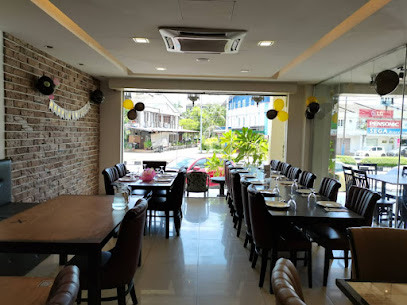
Alhamdulillah Restaurant
Experience authentic Syrian cuisine at Alhamdulillah Restaurant in Langkawi – where every dish tells a story.

Putumayo Restaurant 复古海滨餐厅
Savor fresh seafood and Asian fusion delights at Putumayo Restaurant in Langkawi's breathtaking beachside setting.

Red Tomato Langkawi
Experience authentic Malaysian flavors at Red Tomato Langkawi – where every dish tells a story amidst beautiful tropical surroundings.

Nasi Arab (Kaki Gunung Cafe)
Experience authentic Malaysian cuisine at Nasi Arab (Kaki Gunung Cafe) in Langkawi – where every dish tells a story.

THE CLIFF BEACH RESTAURANT SDN BHD (1329221-U)
Experience exquisite Asian fusion cuisine at The Cliff Beach Restaurant while enjoying breathtaking views of Pulau Langkawi's stunning coastline.
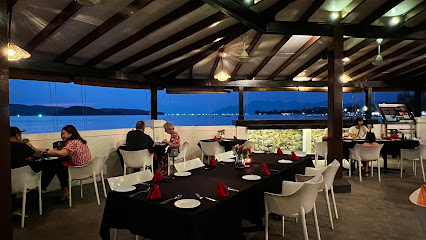
The Fat Frog
Experience diverse culinary delights at The Fat Frog in Langkawi - where Mediterranean meets Italian and health-conscious dining.

Cactus
Discover culinary delights at Cactus in Langkawi's Holiday Villa Beach Resort - where local flavors meet international cuisine.

Unkaizan Japanese Restaurant
Experience authentic Japanese cuisine at Unkaizan Restaurant in Langkawi—where tradition meets culinary excellence.

Markets, malls and hidden boutiques
Perniagaan Haji Ismail Group Pekan Kuah
Explore Langkawi's premier duty-free shopping destination at Perniagaan Haji Ismail Group, where local culture meets unbeatable prices.

Cenang Mall, Langkawi
Discover the vibrant shopping scene at Cenang Mall in Langkawi, where local flavors meet international brands in a tropical paradise.

The Zon Duty Free Zone
Shop duty-free in the heart of Langkawi at The Zon Duty Free Zone, your ultimate destination for luxury and local treasures.
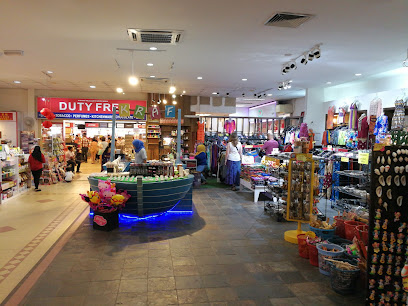
Langkawi Fair Shopping Mall, Langkawi
Experience the best shopping and dining at Langkawi Fair Shopping Mall, your go-to destination for local treasures and international brands.

Teow Soon Huat Duty Free Sdn. Bhd.
Explore Teow Soon Huat Duty Free in Langkawi for unbeatable duty-free shopping, a cinema experience, and local delicacies all under one roof.

Langkawi Parade
Explore Langkawi Parade, where duty-free shopping meets local culture, offering a unique experience for every traveler in the heart of Kedah.

Rams Home Decor Sdn Bhd (811058W) @ Pekan Rabu
Explore Rams Home Decor Sdn Bhd in Pekan Rabu for an unforgettable duty-free shopping experience featuring home decor, perfumes, and local delicacies.

Temonyong Night Market - Thursday
Discover the flavors and crafts of Langkawi at the bustling Temonyong Night Market every Thursday night.

Idaman Suri
Discover the best of Langkawi shopping at Idaman Suri, where local treasures meet global brands in a delightful department store experience.

Langkawi Craft Complex
Explore the vibrant Langkawi Craft Complex for unique handmade souvenirs and experience the rich cultural heritage of Malaysia.

Eastern Cenang 2 Duty Free Shopping Outlet Langkawi (Flagship Chocolate Store)
Explore a chocolate lover's paradise at Eastern Cenang 2 Duty Free Shopping Outlet, the ultimate destination for sweet treats and exclusive perfumes in Langkawi.

Coco Valley Sdn Bhd (Pantai Cenang)
Explore Coco Valley Sdn Bhd in Pantai Cenang, a premier duty-free store offering an array of chocolates, local crafts, and delightful candies.

Eastern Cenang Duty Free Shopping Outlet Langkawi (beside 7Eleven)
Experience the ultimate shopping destination in Langkawi at Eastern Cenang Duty Free Shopping Outlet, where quality meets great savings.

Langkawi Saga Shopping Centre
Explore Langkawi Saga Shopping Centre: A vibrant shopping mall in Kuah with diverse retailers, tasty eateries, and cultural events. A must-visit destination!

Jetty Point Duty Free Sdn. Bhd.
Discover unbeatable prices on luxury goods and local delicacies at Jetty Point Duty Free in Kuah, Langkawi.

Essential bars & hidden hideouts
Yellow Beach Cafe
Discover the vibrant Yellow Beach Cafe in Langkawi, where delicious Western cuisine meets stunning beach views in a lively atmosphere.
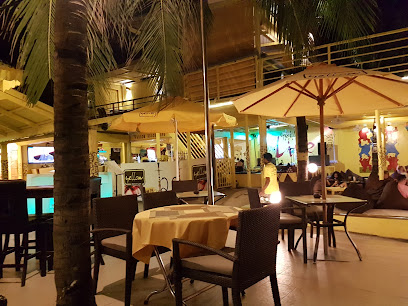
Hidden Langkawi
Experience the vibrant atmosphere and exquisite flavors at Hidden Langkawi, the ultimate bar and western restaurant in Langkawi.

Sunba Retro Bar
Discover the lively nightlife of Langkawi at Sunba Retro Bar, where retro vibes meet refreshing drinks and great company.

Ah Chong beach bar cafe
Discover the vibrant atmosphere of Ah Chong Beach Bar Cafe at Pantai Chenang, where sunsets meet refreshing cocktails and unforgettable beach vibes.

Rockafellers Langkawi
Discover the vibrant atmosphere of Rockafellers Langkawi, where delicious cuisine meets thrilling sports entertainment.
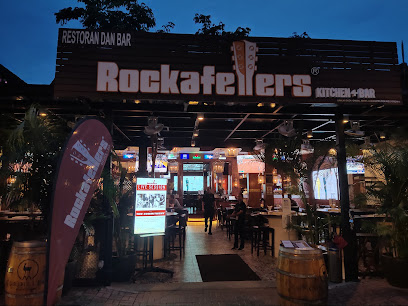
One Love Langkawi
Experience the vibrant nightlife at One Love Langkawi, where creative cocktails and a lively atmosphere await in the heart of Pantai Cenang.

Red Sky Restaurant & Bar
Experience the lively atmosphere and delightful cuisine at Red Sky Restaurant & Bar on beautiful Langkawi Island.

Cinnamons Bar ( Pantai Cenang Bar & Gift )
Discover the vibrant nightlife at Cinnamons Bar in Pantai Cenang, where cocktails meet cozy ambiance and unique souvenirs await.

Brian's Bar
Discover the lively charm of Brian's Bar in Langkawi, where good vibes, delicious drinks, and friendly cats create a unique nightlife experience.

Beer House (LANGKAWI)
Discover the vibrant atmosphere of Beer House in Langkawi, where exceptional brews and delightful bites create the perfect island escape.

Mali Mali Beach Bar
Discover Mali Mali Beach Bar in Langkawi - a vibrant beachside bar with refreshing drinks, stunning views, and a lively atmosphere.

Cellar Bank Langkawi
Experience the vibrant nightlife at Cellar Bank Langkawi, a charming bar with an extensive wine selection and inviting ambiance.

AnakHantuBeachBar
Experience the vibrant atmosphere and breathtaking views at Anak Hantu Beach Bar, a must-visit destination on Langkawi's beautiful Chenang Beach.
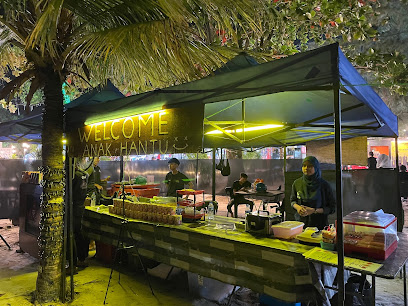
The Blarney Stone Langkawi
Discover the vibrant atmosphere of The Blarney Stone, Langkawi’s ultimate Irish pub experience with great food, drinks, and live entertainment.

Rhu Bar
Experience the serene elegance of Rhu Bar in Langkawi, where exquisite cocktails meet stunning sunset views.

Local Phrases
-
- HelloApa khabar
[ah-pah kha-bar] - GoodbyeSelamat tinggal
[suh-lah-mat ting-gal] - YesYa
[yah] - NoTidak
[tee-dak] - Please/You're welcomeSila
[see-lah] - Thank youTerima kasih
[teh-ree-mah ka-see] - Excuse me/SorryMaaf
[mah-ahf] - How are you?Apa khabar?
[ah-pah kha-bar] - Fine. And you?Baik. Dan awak?
[bike. dan ah-wak] - Do you speak English?Boleh cakap Bahasa Inggeris?
[boh-leh cha-kap ba-ha-sa ing-ger-is] - I don't understandSaya tak faham
[sah-yah tak fah-ham]
- HelloApa khabar
-
- I'd like to see the menu, pleaseSaya ingin lihat menu, sila
[sah-yah in-geen lee-hat meh-noo, see-lah] - I don't eat meatSaya tidak makan daging
[sah-yah tee-dak ma-kan dah-eeng] - Cheers!Sihat!
[see-hat] - I would like to pay, pleaseSaya ingin bayar, sila
[sah-yah in-geen ba-yar, see-lah]
- I'd like to see the menu, pleaseSaya ingin lihat menu, sila
-
- Help!Tolong!
[toh-long] - Go away!Pergi jauh-jauh!
[per-gee jah-oo jah-oo] - Call the Police!Panggil polis!
[pang-geel po-lees] - Call a doctor!Panggil doktor!
[pang-geel dok-tor] - I'm lostSaya sesat
[sah-yah seh-sat] - I'm illSaya sakit
[sah-yah sah-kit]
- Help!Tolong!
-
- I'd like to buy...Saya ingin membeli...
[sah-yah in-geen mem-beh-lee] - I'm just lookingSaya hanya tengok-tengok
[sah-yah hun-yah ten-gok-ten-gok] - How much is it?Berapa harganya?
[beh-rah-pah har-gan-yah] - That's too expensiveItu terlalu mahal
[ee-too teh-rah-lah ma-hal] - Can you lower the price?Boleh kurangkan harga?
[boh-leh koor-ang-kan har-gah]
- I'd like to buy...Saya ingin membeli...
-
- What time is it?Pukul berapa sekarang?
[poo-kool beh-rah-pah suh-kah-rang] - It's one o'clockPukul satu
[poo-kool sah-too] - Half past (10)Pukul setengah (sepuluh)
[poo-kool suh-teng-ah (suh-poo-loo)] - MorningPagi
[pah-gee] - AfternoonPetang
[peh-tang] - EveningMalam
[mah-lam] - YesterdaySemalam
[seh-ma-lam] - TodayHari ini
[hah-ree ee-nee] - TomorrowEsok
[eh-sook] - 1Satu
[sah-too] - 2Dua
[doo-ah] - 3Tiga
[tee-gah] - 4Empat
[em-paht] - 5Lima
[lee-mah] - 6Enam
[eh-nahm] - 7Tujuh
[too-joo] - 8Lapan
[lah-pan] - 9Sembilan
[sem-bee-lahn] - 10Sepuluh
[suh-poo-loo]
- What time is it?Pukul berapa sekarang?
-
- Where's a/the...?Di mana...
[dee mah-nah] - What's the address?Apa alamatnya?
[ah-pah ah-lah-mat-nyah] - Can you show me (on the map)?Boleh tunjukkan saya (di peta)?
[boh-leh toon-jook-kan sah-yah (dee peh-tah)] - When's the next (bus)?Bila yang seterusnya (bas)?
[bee-lah yang suh-teh-roos-nyah (bahs)] - A ticket (to ....)Satu tiket (ke ....)
[sah-too tee-ket (keh)]
- Where's a/the...?Di mana...
History of Langkawi
-
One of the most famous tales in Langkawi's history is the legend of Mahsuri, a beautiful maiden who lived in the 18th century. Accused of adultery, she was unjustly sentenced to death. As she died, she cursed Langkawi to seven generations of bad luck. This legend has had a profound impact on the island's culture and folklore, and her tomb, Makam Mahsuri, is now a popular tourist attraction.
-
Langkawi's strategic position in the Malacca Strait made it an important stopover for traders on the Maritime Silk Road. From as early as the 15th century, the island served as a bustling port where Arab, Indian, Chinese, and Malay traders exchanged goods like spices, textiles, and precious metals. This historical role has left a lasting legacy on the island’s multicultural heritage.
-
Langkawi was part of the Sultanate of Kedah, which faced constant threats from Siam (modern-day Thailand) and later, British colonial ambitions. In the 19th century, the island came under British influence following the Anglo-Siamese Treaty of 1909, which led to significant changes in its administration and trade practices. The British presence introduced modern infrastructure and education, leaving a lasting impact on the island’s development.
-
During World War II, Langkawi was occupied by Japanese forces from 1942 to 1945. The island's strategic location made it a valuable base for the Japanese military. The occupation was a difficult time for the local population, marked by forced labor and resource exploitation. However, it also strengthened the islanders' resilience and unity, which played a crucial role in the post-war recovery.
-
The modern history of Langkawi took a significant turn in the 1980s when the island was designated as a duty-free zone to boost tourism and economic development. This policy, championed by Malaysia’s Prime Minister Mahathir Mohamad, led to rapid infrastructure development and a boom in tourist activities. Today, Langkawi is renowned for its stunning beaches, luxury resorts, and vibrant cultural festivals, attracting millions of visitors each year.
-
In 2007, Langkawi was awarded the Global Geopark status by UNESCO, making it the first geopark in Southeast Asia. This recognition highlights the island's unique geological heritage, including ancient rock formations and diverse ecosystems. The Geopark status has spurred efforts to balance tourism with environmental conservation, ensuring that Langkawi’s natural beauty is preserved for future generations.
Langkawi Essentials
-
Langkawi is accessible by air and sea. The most convenient way to reach Langkawi is by flying into Langkawi International Airport (LGK), which receives flights from major cities in Malaysia and international destinations like Singapore, Bangkok, and Guangzhou. Alternatively, travelers can take a ferry from Kuala Perlis, Kuala Kedah, Penang, or Satun in Thailand. Ferries operate regularly and provide a scenic journey to the island.
-
Getting around Langkawi is relatively easy. Car rentals are popular and provide the flexibility to explore the island at your own pace. Motorbikes and bicycles are also available for rent. Taxis are readily available, but it's advisable to negotiate the fare before starting your journey as they often do not use meters. Ride-hailing services like Grab are also operational. For a unique experience, consider taking a cable car ride to the top of Gunung Mat Cincang for breathtaking views.
-
The official currency in Langkawi is the Malaysian Ringgit (MYR). Credit and debit cards are widely accepted in hotels, restaurants, and larger shops. However, it's advisable to carry some cash for smaller establishments and street vendors. ATMs are available throughout the island, including at the airport, shopping centers, and major tourist areas.
-
Langkawi is generally safe for tourists. However, like any other tourist destination, it is important to take standard precautions. Avoid leaving belongings unattended on the beach or in public places. While serious crimes are rare, petty theft can occur. Kuah, the main town, and popular tourist areas like Pantai Cenang are generally safe, but it is always wise to stay vigilant, especially at night.
-
In case of emergency, dial 999 for police, ambulance, or fire services. Langkawi Hospital in Kuah provides medical services, and several clinics are available for minor health issues. Pharmacies are also widely available. It is recommended to have travel insurance that covers medical emergencies. For consular assistance, contact your nearest embassy or consulate in Malaysia.
-
Fashion: Do dress modestly, especially when visiting religious or cultural sites. Swimwear is acceptable at the beach but should be covered up elsewhere. Religion: Do respect local customs, especially at mosques. Shoes should be removed before entering, and women should cover their heads. Public Transport: Do use ride-hailing apps for convenience. Don’t expect public buses as they are limited. Greetings: Do greet people with a smile and a slight bow. Handshakes are common but should be gentle. Eating & Drinking: Do try local dishes like nasi lemak and laksa. Don’t eat or drink in public places during Ramadan as a sign of respect to fasting Muslims.
-
To experience Langkawi like a local, visit the night markets (Pasar Malam) held in different locations each night for a taste of local street food and culture. Engage with locals at these markets or at coffee shops (kopitiams). Take a mangrove tour in Kilim Karst Geoforest Park to learn about the unique ecosystem. Don't miss the opportunity to explore lesser-known beaches like Tanjung Rhu and Pasir Tengkorak, which offer serene environments away from the tourist crowds.
Trending Landmark in Langkawi
-
Langkawi Skybridge Cable Car
-
Langkawi Sky Bridge
-
Dataran Lang
-
Underwater World Langkawi
-
Kuah Jetty, Langkawi
-
Kilim Geoforest Park
-
Langkawi Wildlife Park
-
Kota Mahsuri
-
Temurun Waterfall
-
Beras Terbakar, Kampung Raja, Langkawi, Kedah.
-
Teow Soon Huat Duty Free Sdn. Bhd.
-
Telaga Tujuh Waterfall
-
Legenda Park
-
Gunung Raya
-
Taman Agroteknologi MARDI Langkawi
Nearby Cities to Langkawi
-
Things To Do in Satun
-
Things To Do in George Town
-
Things To Do in Trang
-
Things To Do in Penang
-
Things To Do in Krabi
-
Things To Do in Nakhon Si Thammarat
-
Things To Do in Ipoh
-
Things To Do in Phuket
-
Things To Do in Kota Bharu
-
Things To Do in Cameron Highlands
-
Things To Do in Surat Thani
-
Things To Do in Medan
-
Things To Do in Koh Samui
-
Things To Do in Kuala Terengganu
-
Things To Do in Kuala Lumpur













